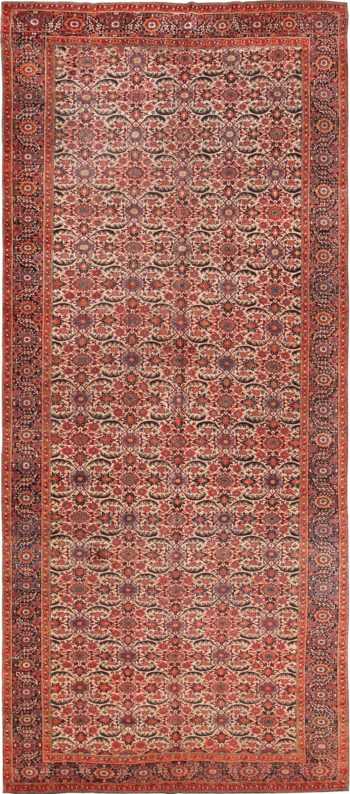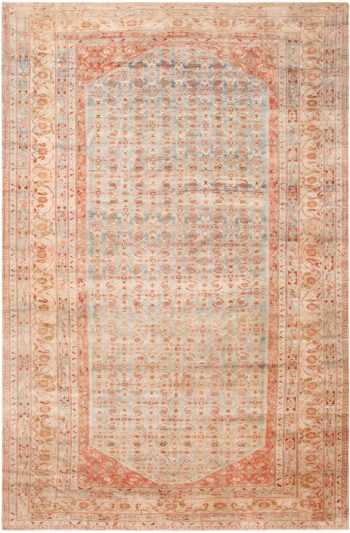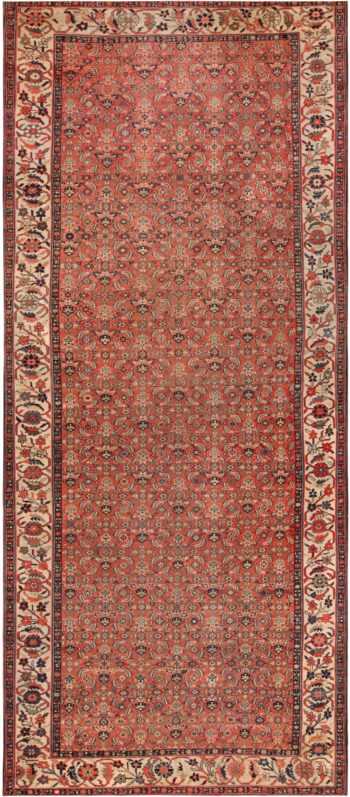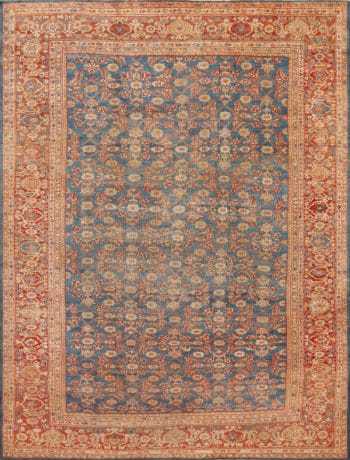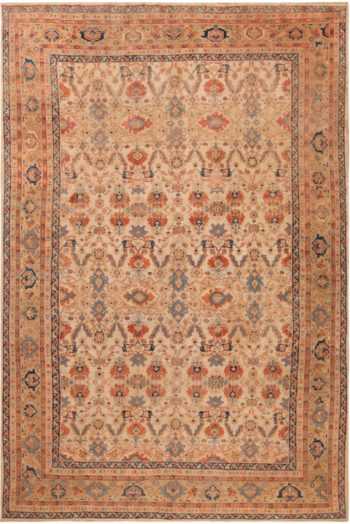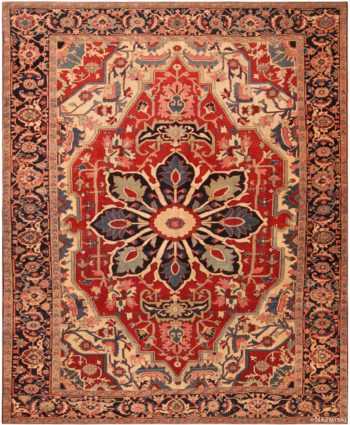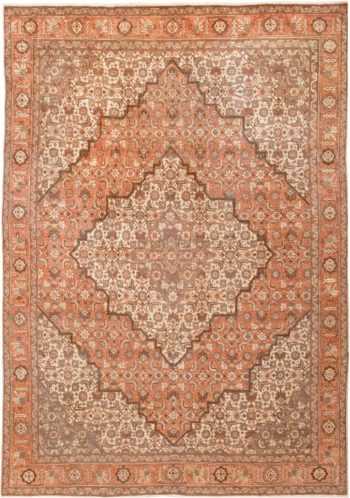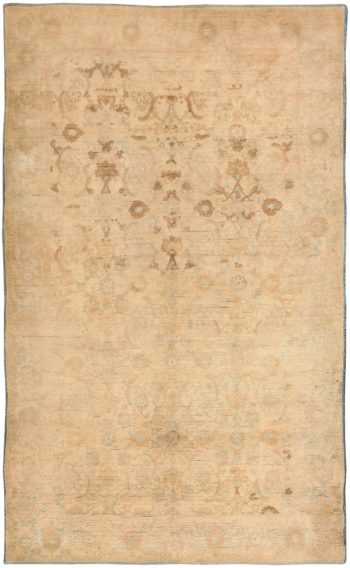Mahi Herati Fish Design Rugs
View some spectacular herati mahi fish design rugs:
-
Oversized Grey Antique Allover Herati Fish Design Persian Malayer Rug 71334
$46,500.00Size: 10 ft 4 in x 22 ft 2 in (3.15 m x 6.76 m) -
Gallery Size Antique Persian Bidjar Herati Rug 70552
$28,500.00Size: 8 ft 7 in x 19 ft 6 in (2.62 m x 5.94 m) -
Large Light Blue Pastel Antique Persian Malayer Herati Rug 71177
$86,000.00Size: 12 ft 4 in x 18 ft 8 in (3.76 m x 5.69 m) -
Rustic Antique Tribal Persian Herati Malayer Abrashed Hallway Runner Rug 48308
$12,500.00Size: 5 ft x 17 ft 3 in (1.52 m x 5.26 m) -
Rustic Gallery Size Antique Casual Elegant Persian Herati Malayer Rug 71996
$7,500.00Size: 7 ft 2 in x 16 ft 9 in (2.18 m x 5.11 m) -
Large Size Decorative Soft Neutral Allover Antique Persian Herati Design Tabriz Carpet 48211
$48,000.00Size: 13 ft 7 in x 16 ft 7 in (4.14 m x 5.05 m) -
Light Blue Rustic Tribal Herati Fish Design Antique Persian Sultanabad Rug 72692
$28,500.00Size: 9 ft 10 in x 13 ft 2 in (3 m x 4.01 m) -
Casual Decorative Antique Allover Herati Design Rustic Persian Sultanabad Rug 71971
$24,500.00Size: 8 ft 9 in x 12 ft 6 in (2.67 m x 3.81 m) -
Neutral Washed Out Decorative Antique Warm Tone Tribal Persian Herati Malayer Hallway Runner Rug 72047
$8,500.00Size: 3 ft 6 in x 11 ft 10 in (1.07 m x 3.61 m) -
Rustic Jewel Tone Bold Antique Persian Heriz Serapi Medallion Rug 71982
$22,500.00Size: 9 ft 9 in x 11 ft 9 in (2.97 m x 3.58 m) -
Blue Tribal Herati Antique Persian Malayer Hallway Runner Rug 48464
$8,600.00Size: 3 ft x 10 ft 10 in (0.91 m x 3.3 m) -
Tribal Geometric Herati Antique Jewel Tone Persian Heriz Allover Area Rug 72099
$18,500.00Size: 8 ft 5 in x 10 ft 3 in (2.57 m x 3.12 m) -
Fine Herati Fish Design Antique Persian Room Size Tabriz Rug 45268
$12,500.00Size: 7 ft 1 in x 10 ft 3 in (2.16 m x 3.12 m) -
Soft Decorative Ivory Antique Indian Cotton Agra Herati Design Abrash Rug 40770
Size: 5 ft x 8 ft 6 in (1.52 m x 2.59 m) -
Beautiful Fine Small Size Antique Persian Tabriz Herati Rug 72041
$3,500.00Size: 4 ft 2 in x 5 ft 9 in (1.27 m x 1.75 m) -
Small Square Rustic Antique Tribal Herati Persian Heriz Jewel Tone Medallion Rug 72105
$4,800.00Size: 4 ft x 4 ft 8 in (1.22 m x 1.42 m) -
Beautiful Small Tribal Casual Elegant Antique Persian Herati Malayer Rug 72046
Size: 2 ft 8 in x 4 ft 6 in (0.81 m x 1.37 m)
Learn More About Herati Design Rugs and Mahi or Fish Design Carpets
Meanings of Herati, Mahi and Fish Designs in Area Rugs
Click Here to Go Back to List of Symbols
Antique Rug Design: Herati / Mahi Motif / Fish Design
If you were to picture a Middle Eastern marketplace or bazaar from hundreds of years ago, chances are one aspect of what you would most likely envision involves many fine fabrics being haggled over while many wonderful scents of incense and the like waft through the noise-filled air. Many of these fabrics and materials would, once the din of commercial transactions was complete, end up in the hands of exceptionally skilled artisans who would then quietly create rugs and carpets of stunning opulence and beauty. These masterpieces would in turn adorn the most affluent and esteemed private residences.

Example of what the fish herati mahi rug design looks like
The mahi fish herati design motif in rugs
One of the more common design motifs used in these elegant ancient rugs is the iconic fish design rugs, also called – “Herati” or “Mahi” pattern. While a few specifics may differ based on the country or region where these rugs are produced, what is generally true is that the pattern consists of an elaborately rendered diamond with a rosette inside. (The former often encapsulates decorative floral elements which resemble fish, hence the use of the Farsi term of “mahi”, which translates to “fish”.)

A herati motif medallion on a Senneh rug.
As opposed to being used exclusively as a centrally placed element / default focal point, the mahi motif is often traditionally utilized in a number of different ways: it can appear as a repetitive feature which fills in the expanse around the center of the rug, or as a border-specific motif. The attractiveness of the design was evidently not lost on the craftsmen of long ago, and so they duly made every effort to emphasize the Mahi pattern as much as possible, an approach the artisans of today have also dutifully adhered to with great effect. Above and beyond the obvious aesthetic appeal of the design, symbolism is also very much in play as the motif is thought to bring good luck to those who possess it.
The material used for weaving mahi herati fish design rugs
Some of the materials which are traditionally used in the creation of the immensely popular Mahi rug include wool, silk, and cotton, while some of the most impressive examples incorporate threads of gold. Predictably, the higher the silk and metallic content, the higher the quality and cost. (A high knot count is also indicative of exceptional quality and durability, and therefore, understandably so, a higher price as well.)

An allover pattern of herati motifs on a Persian rug.
The origin of the herati / mahi / fish design
The exact origins of the herati / mahi fish design is still somewhat unsettled. That said, it is fairly widely accepted that the Farsi-speaking region of Western Iran and the country of Turkey, represent the locations where this particular style of rug design does in fact have its most definitive roots.
Perhaps a bit of a slightly stronger case can be made for Iran given that the city of Herat (which was initially located in Persia but now resides within Afghanistan’s borders) provided obvious eponymous inspiration for the naming of the very design itself. Regardless of any quibbles concerning direct national or cultural lineage, this general area’s role in and contribution to the development and popularization of the Mahi pattern is laudable and, again, undisputed.

Antique Fish Design Rugs
The iconic herati fish design area rugs
Mahi fish design area rugs are famed for not only their aesthetic appeal but their durability (and attendant functionality) as well. In fact, the beauty of these pieces truly belies their practicality; they do not need to be seen or treated as mere show-pieces, but can actually be put to use in the home as desired. This durability and practicality, coupled with our ability to produce bespoke versions which more accurately reflect your personal style and taste, makes for a truly great investment.
Our properly sourced and high-quality herati examples will not only provide a distinct and enviable flair to your home, but also a traditional dose of good luck. Needless to say, they also make for great gifts for those who appreciate items that exhibit not only fine craftsmanship, but are also evocative of a magical past, one replete with the soothing smell of incense and noisy bustling Persian markets.


